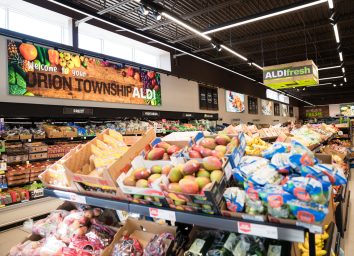4 Holiday Food Shortages You Should Know About Now
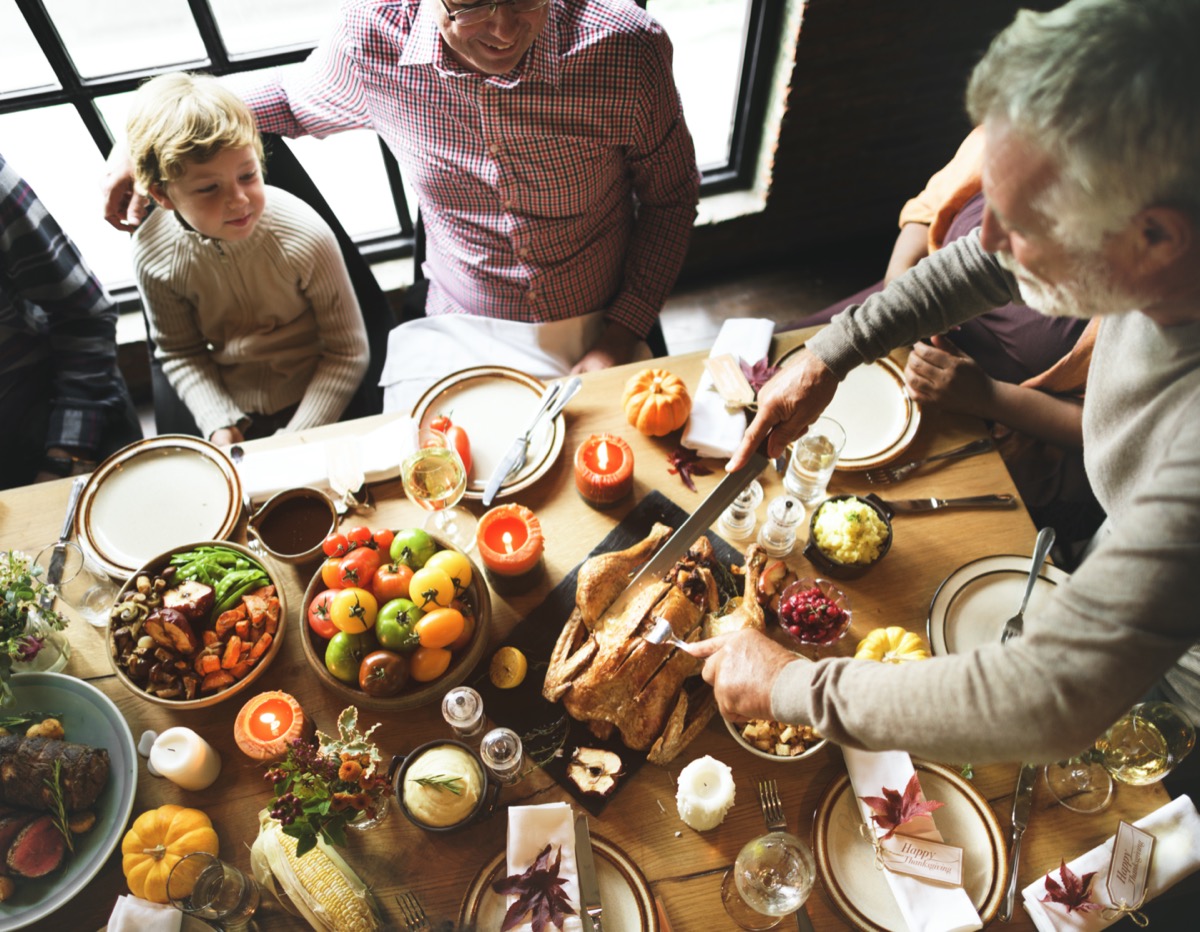
The holidays are right around the corner, which means it's nearly time to start planning special dinners to enjoy with your family. For Thanksgiving, dinner likely entails roast turkey with cranberry sauce, green beans, and pumpkin pie. For Hanukkah, the menu might feature brisket, challah, chicken, and matzo. And for Christmas, you probably plan to save room on your plate for ham, mashed potatoes, and pecan pie.
No matter what you celebrate, you should consider shopping for groceries early this year. Unfortunately, some holiday foods are already hard to find on supermarket shelves. Here's a list of four holiday foods that could be impacted by shortages soon—if they aren't already.
Turkey
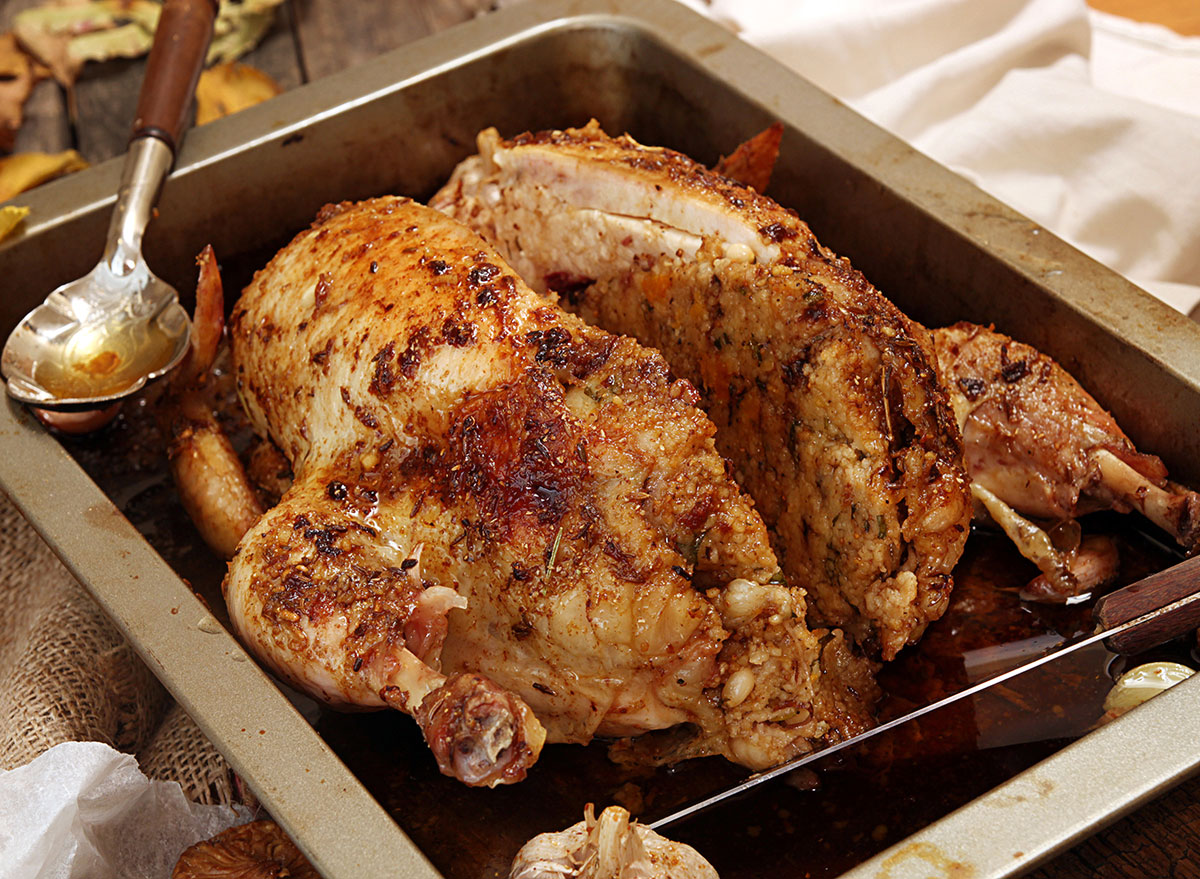
Because Americans celebrated Thanksgiving in smaller groups last year, they also opted for smaller turkeys than normal. There's a shortage of the smaller birds this year that feed around 10 to 14 people, which farms just can't develop fast enough. A myriad of factors is to blame, including higher corn and grain prices, factory shutdowns due to COVID-19, and a tight labor market.
Grocers are struggling to fulfill orders, and they're thinking creatively about how to get customers the food they need. Some stores are breaking up 20-pound turkeys into parts to sell. Others are adding more frozen birds to their stock—but these require more time to cook, so make sure you know exactly when to buy your Thanksgiving turkey.
Related: To get all of the latest grocery store news delivered right to your email inbox every day, sign up for our newsletter!
Apples
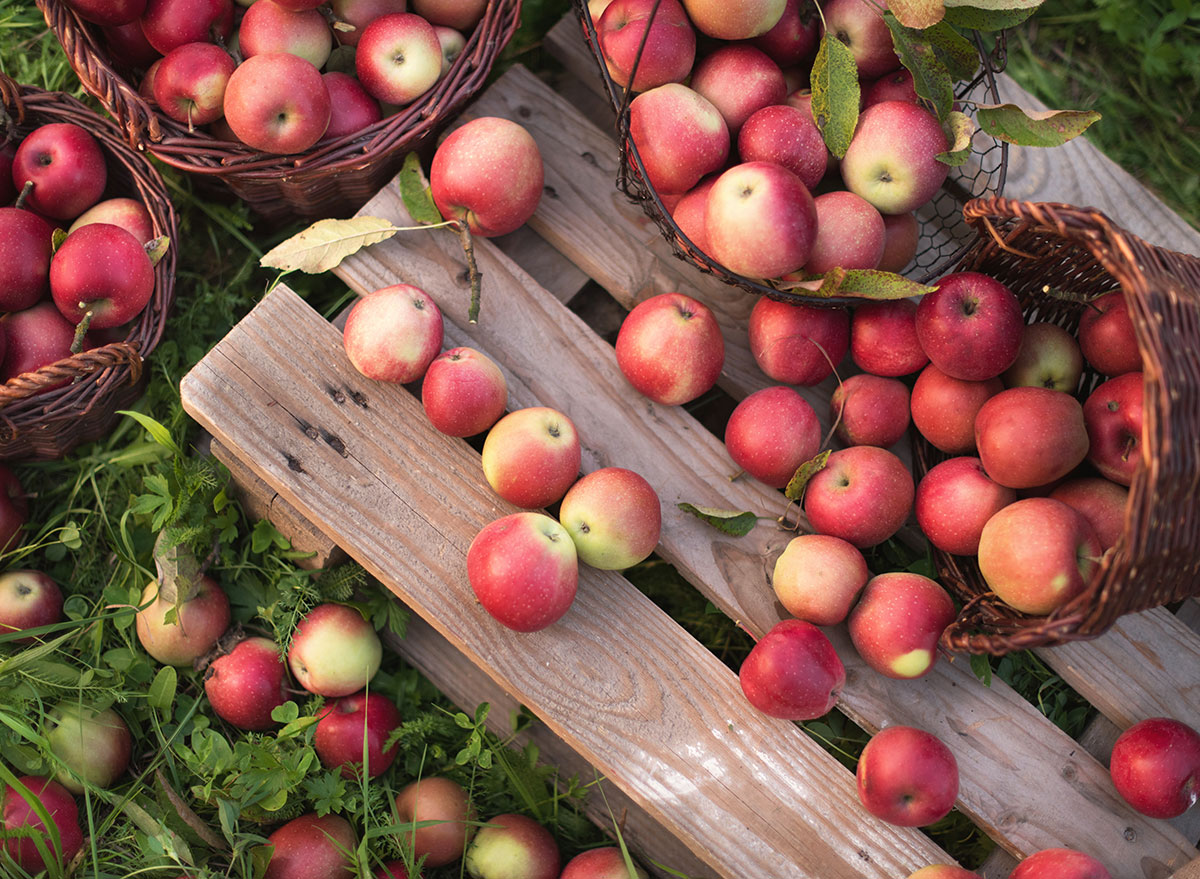
Every year, Minnesota's Northwoods Orchard typically harvests about 20 bushels of apples per tree. This year, however, it's facing "tremendous" production setbacks.
"We're lucky if there's even a bushel of apples being harvested from some of the trees," Tom Eckdahl, whose brother owns the farm, told local news station KTTC. "And some of the trees simply don't have any apples at all."
"Some of it is drought-related. Some of it is just — it could be insects," he added. "It could be frost-related from early season, but there is a tremendous setback for apple production here at the orchard."
The Little Farmer in Wisconsin has 7,000 trees and produces about 20 varieties of apples. Thanks to a late spring freeze, the orchard also reports harvesting fewer apples this year.
"Almost all orchards in Wisconsin are having a light apple crop due to this," the farm wrote in a Facebook post. "Our farmers are just as bummed about the light crop this year as you are, not to mention with the labor shortage, we are very tired!!"
Pumpkin
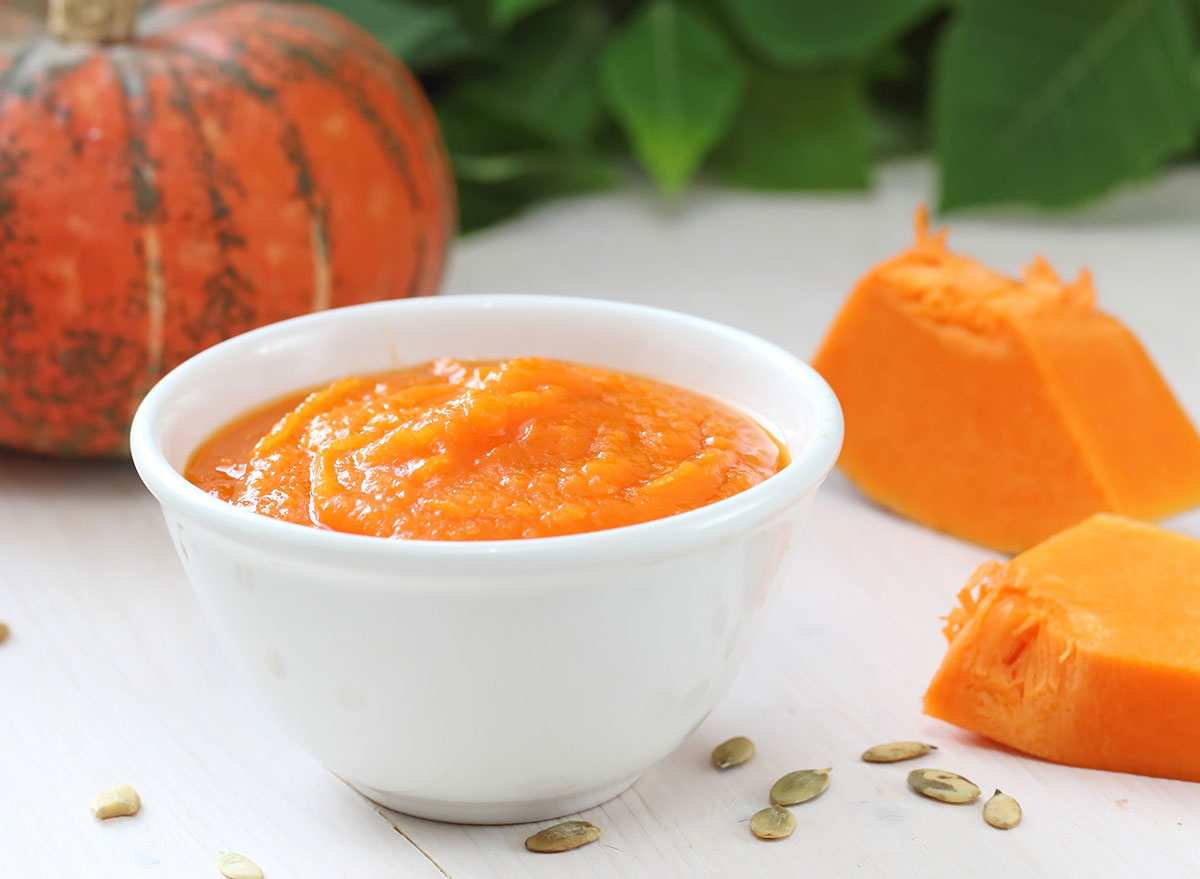
Pumpkin purée was hard to find last year after drier-than-normal conditions meant farmers couldn't plant seeds until later than normal. This year, a fungus is impacting pumpkin plants in Illinois, which supplies the vast majority of canned pumpkin sold nationwide.
Phytophthora blight is a type of vine infection that can harm pumpkins, as well as squash and other vegetables, according to the St. Louis Public Radio. "If we do not have enough processed pumpkins, we may not have enough canned pumpkin for, let's say, Thanksgiving," Mohammad Babadoost, a professor of plant pathology at the University of Illinois, told the outlet.
Related: The #1 Healthiest Pumpkin Spice Latte, Says Dietitian
Cranberries
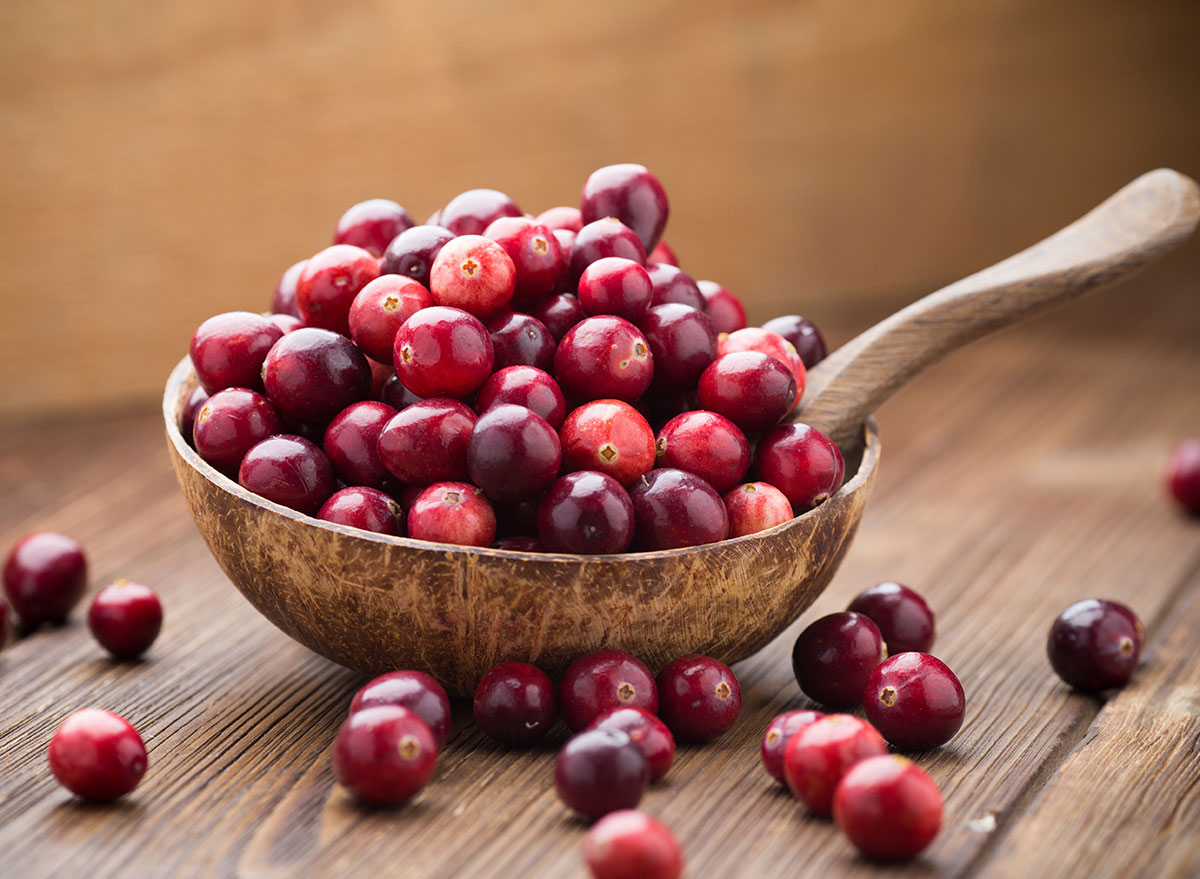
Midwest crops are having a tough year! In addition to dwindling apple and pumpkin harvests, the season's cranberry crop was previously projected to be well below average. The U.S. Cranberry Marketing Committee's forecast in August predicted that around 4.92 million barrels would be harvested in Wisconsin.
However, Wisconsin Public Radio recently reported that growers were now expecting a "near-average crop size." That means a haul closer to the state average of 5.5 million barrels.
"We still have a few weeks to go before we start harvesting and the continued warm weather might help the fruit size up a little bit," Tom Lochner, executive director for the Wisconsin Cranberry Growers Association, told the outlet.
Cranberries and cranberry juice soared in popularity last year as everyone spent more time at home.
For more information about what's happening at your local grocery store, check out:
- America's Largest Grocery Chain Is Changing Its Mask Rule
- Costco Just Told Members This Grocery Essential is Delayed
- Grocery Prices Will Continue to Spike, This Grocery Chain Says
- These Two Popular Grocery Chains Are Closing Earlier Due to the Delta Variant


